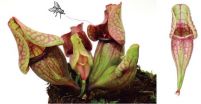(Press-News.org) NEW YORK, NY - Researchers have built a new computational tool that identifies 800 different ways people are at increased risk for post-traumatic stress disorder (PTSD), permitting for the first time a personalized prediction guide.
Results from the study out of NYU Langone Medical Center are published online (date) in the journal BMC Psychiatry.
"Our study shows that high-risk individuals who have experienced a traumatic event can be identified less than two weeks after they are first seen in the emergency department," says Arieh Y. Shalev, MD, the Barbara Wilson Professor in the Department of Psychiatry at NYU Langone and a co-director of NYU's Steven and Alexandra Cohen Veterans Center. "Until now, we have not had a tool - in this case a computational algorithm -- that can weigh the many different ways in which trauma occurs to individuals and provides a personalized risk estimate."
Presently, all that clinicians have had to work with are computation methods capable of calculating the average risk for entire groups of survivors -- and those have proven to be insufficient as an individual risk prediction tool. The new algorithm applied risk prediction tools currently used to predict the growth of cancer, to predicting PTSD.
The study set out to uncover interchangeable, maximally predictive sets of early risk indicators and build a Target Information Equivalence Algorithm, previously developed at the NYU Center for Health Bioinformatics for molecular and cancer research. The algorithm showed that, when applied to data collected within ten days of a traumatic event, it can more accurately predict who is likely to develop PTSD despite the many ways in which traumatic events occur. Data crunched into the algorithm includes variables on type of event, early symptoms, and emergency department findings.
"Until recently, we mainly used early symptoms to predict PTSD, and it had its drawbacks," Dr. Shalev. "This study extends our ability to predict effectively. For example, it shows that features like the occurrence of head trauma, duration of stay in the emergency department, or survivors' expressing a need for help, can be integrated into a predictive tool and improve the prediction."
Devising a strong predictive model also is imperative for tailoring prevention efforts for people at risk for developing PTSD, Dr. Shalev adds.
Dr. Shalev's latest study builds on data originally gathered from the Jerusalem Trauma Outreach and Prevention Study, which he and colleagues conducted at Hadassah Hospital in Israel and which previously was published in Archives of General Psychiatry. That study concluded that two forms of cognitive behavioral therapy, prolonged exposure and cognitive therapy, were equally effective in preventing PTSD in recent survivors.
Dr. Shalev was careful to stress that this latest publication is a "proof of concept" paper. For robust prediction across conditions, he says, the identified algorithm needs to be used to gather knowledge gained in traumatic events experienced by other patient populations and traumatic events - beyond those analyzed from the earlier study.
To build a generalized predictive model, the research team, in collaboration with researchers from Columbia and Harvard University, has already received datasets from 19 other centers worldwide in an NIMH-funded study designed to produce a comprehensive predictive algorithm.
"In the future, we hope that we will be better able to tailor treatment approaches based on more personalized risk assessment," Dr. Shalev says. "PTSD exacts a heavy toll on affected individuals and society."
According to large epidemiological studies in the US and through the World Health Organization, the majority of living adults will experience at least one traumatic event during their lifetime, and five to ten percent of those exposed to traumatic events may develop PTSD.
INFORMATION:
Dr. Shalev's coauthors from the NYU School of Medicine are Isaac R. Galtzer-Levy, Alexander Statnikov, and Zhiguo Li. Karen-Inge Karstoft, at the Danish Veteran Centre, Ringstaed Denmark, led the research.
This work was supported by the US Public Health/National Institute of Mental Health research grants #R01MH071651 and R34MH102449.
NEW YORK, March 15, 2015 - Most physicians are aware of the importance of lifestyle factors in preventing cardiovascular disease (CVD) -- and believe diet is as important as statin therapy and exercise, according to a new survey from NYU Langone Medical Center.
Researchers found that a majority of doctors would welcome additional training in diet and nutrition so that they can effectively inform patients on the subject. The study will be presented at the American College of Cardiology's 64th Annual Scientific Session as a poster presentation.
The 28-question online survey, ...
NEW YORK, March 4, 2015 - Air pollution has been linked to a dangerous narrowing of neck arteries that occurs prior to strokes, according to researchers at NYU Langone Medical Center.
The scientists analyzed medical test records for more than 300,000 people living in New York, New Jersey or Connecticut. They found that people living in zip codes with the highest average levels of fine-particulate-matter pollution were significantly more likely to show signs of narrowing (stenosis) in their internal carotid arteries, compared to those living in zip codes with the lowest ...
March 16, 2015, New York, NY - Exploring the fundamental mechanism by which a cell-surface receptor transmits its signal, an international team of Ludwig researchers and their colleagues has established proof of concept for an entirely new approach to drug design. They report that a class of synthetic molecules known as diabodies can, from outside the cell, latch onto a target receptor and manipulate it in such a manner as to induce distinct and varying effects within cells and tissues. Led by Christopher Garcia of Ludwig Stanford, the researchers show in lab experiments ...
Carnivorous plants have strange-shaped leaves, and they can grow on nutrient-poor environments by trapping and eating small animals. Charles Darwin, often called "the father of evolution", was also interested in carnivorous plants, and he wrote a book titled "Insectivorous Plants" published in 1875. Since then a lot of researches have been done, but how such strange-shaped leaves were altered during evolution remained unknown.
A research team in Japan has revealed how carnivorous pitcher leaves are formed in Sarracenia purpurea, a carnivorous plant native to North America. ...
Establishing protected areas in forests is one way to keep deforestation at bay and safeguard biodiversity. However, a study led by researchers from the National University of Singapore (NUS) has revealed that such a measure is ineffective in the case of biodiversity-focused protected areas in Indonesia.
The research, led by Assistant Professor Roman Carrasco of the Department of Biological Sciences at the NUS Faculty of Science and Assistant Professor Alex Cook of NUS' Saw Swee Hock School of Public Health, found that the monitoring and prevention of road construction ...
According to a meta-analysis published in BMC Family Practice, high dose zinc acetate lozenges may help shorten diverse symptoms associated with the common cold.
The common cold is an infection caused by over a hundred viruses, and it is a major cause of days off school or work and visits to a doctor.
A previous meta-analysis of three randomized trials found that high dose zinc acetate lozenges shorten the duration of colds by 42%. Since all of the three studies reported the duration of diverse respiratory symptoms and of systemic symptoms such as muscle ache and headache, ...
To increase the biomass of fish, contemporary ecological theory predicts that either the amount of food or the quality of the food has to increase. In a recent experiment, researchers at Umeå University doubled the fish biomass under identical food supply and food quality by only controlling how much of total food supply that was channelled to juvenile and adult fish, respectively. The results have major implications for the exploitation (harvest) of fish populations and the coexistence of predatory fish and their prey.
To increase the biomass of a population, contemporary ...
A means of reprogramming a flawed immune response into an efficient anti-tumoral one was brought to light by the results of a translational trial relating to breast cancer. Thanks to the innovative combination of mathematical modelisation and experimentation, only 20 tests were necessary, whereas traditional experimentation would have required 596 tests to obtain the same results.
The study was jointly conducted by Doctor Marie-Agnès Doucey (Experimental oncology, Centre Ludwig de l'UNIL pour la recherche sur le cancer), Professor Ioannis Xenarios (UNIL, SIB, Vital-IT) ...
The Menetries's tiger moth (Borearctia menetriesii) is the most rare and enigmatic representative among the Palearctic Arctiinae. During an expedition in almost inaccessible wild taiga area of Eastern Siberia, Russian scientists had the luck to encounter it. During their studies they also recorded feeding larva of this mysterious species on a native devil's helmet host plant for the first time. The study was published in the open access journal Nota Lepidopterologica.
The Menetries's tiger moth (Borearctia menetriesii) is the most rare and enigmatic representative among ...
Amsterdam, March 16, 2015 - Elsevier journal Maturitas, today announced the publication of a position statement by the European Menopause and Andropause Society (EMAS) covering the ten- point guide to the integral management of menopausal health. This has been written to mark the 10th EMAS Congress in Madrid May 20-22, 2015.
With increased longevity and more women becoming centenarians, management of the menopause and post-reproductive health is of growing importance as it has the potential to help promote health over several decades. Women have individual needs and the ...

